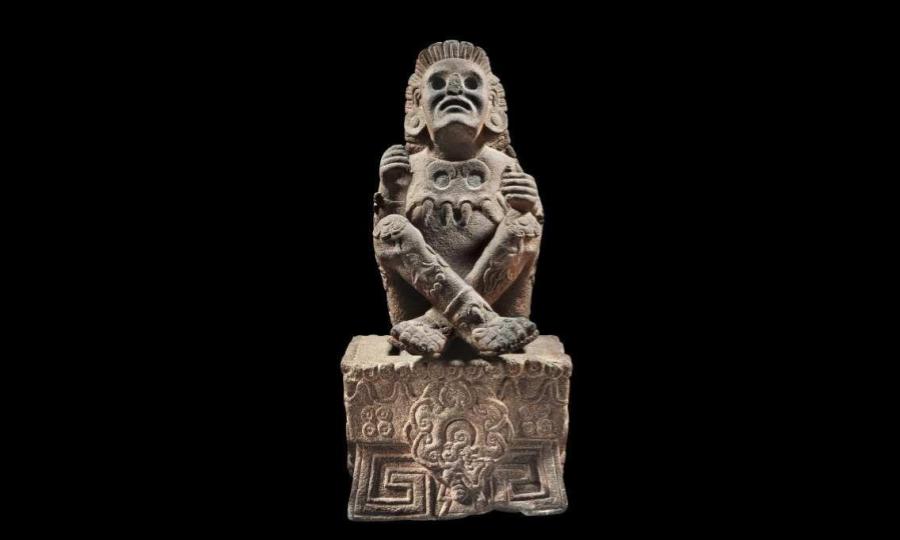The Aztec god Xochipilli is associated with four animals, the mischievous monkey, the hocco, the royal Eagle but most of all, the butterfly, which is fitting with his name of Flowerprince (xochi: flower; pilli: prince). We shall see that the butterfly has for the Aztecs like for other cultures many symbolic meanings and we shall also try to understand why the butterfly, primarily associated with Xochipilli is to be seen in representations of other Aztec gods.
Like candles in the wind
We can read in the ancient Indian poem Bhagavad Gita: «butterflies rush to their death by burning their wings in the dancing flame. Likewise mortals head towards their fall». Butterflies are a universal symbol of the beauty and frailty of human life. A mosaic on the pavement of a dining-room in the Roman city of Pompei warned the guests that their pleasures wouldn’t last. We see a skull, a reminder of death, a carpenter’s square (death is the great equalizer making no difference between rich and poor), a wheel of fortune and a butterfly, symbol of ephemerality. The lesson was «carpe diem», «seize the day», pick the flowers of pleasure while you are still alive.

In 17th century Europe, paintings called Vanities reminded the Christian that worldly pleasures were vain and empty and featured symbols of the frailty of human life: skulls, hourglasses, flickering candles, shells and butterflies.
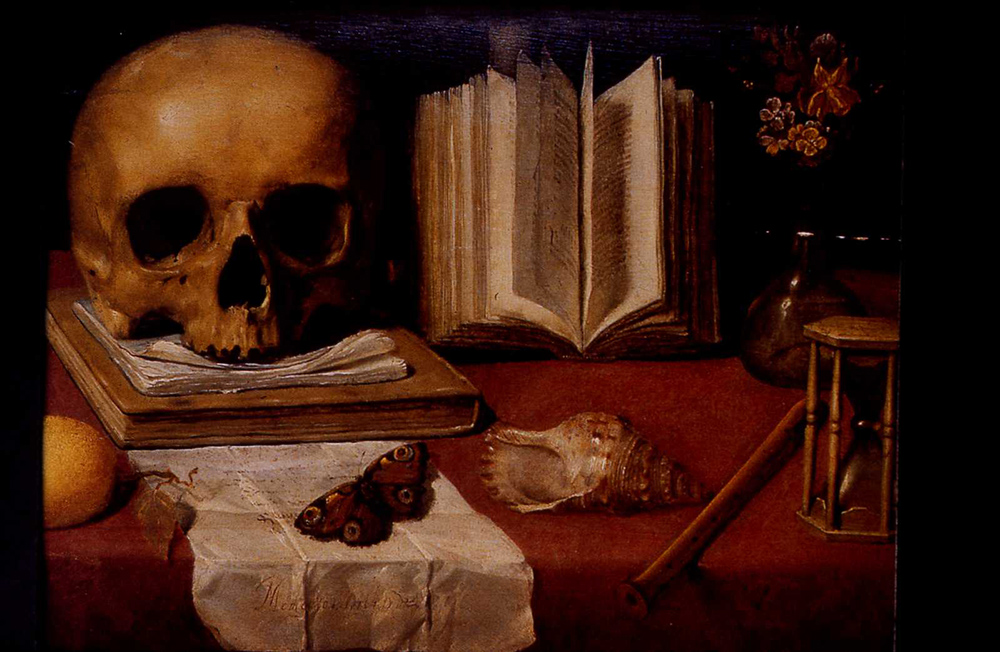
We find similar symbols in Aztec culture. Poems often establish an analogy between gold, jade, precious gems, quetzal feathers and butterflies, all things of sparkling beauty. One poem stresses their frailty :
Even jade is shattered
Even gold is crushed
Even quetzal plumes are torn
One does not live forever on this Earth.
Xochipilli was the god of dance, music, poetry, games and pleasure. His emblema, the butterfly, is often featured on drinking-vessels or ritual objects.
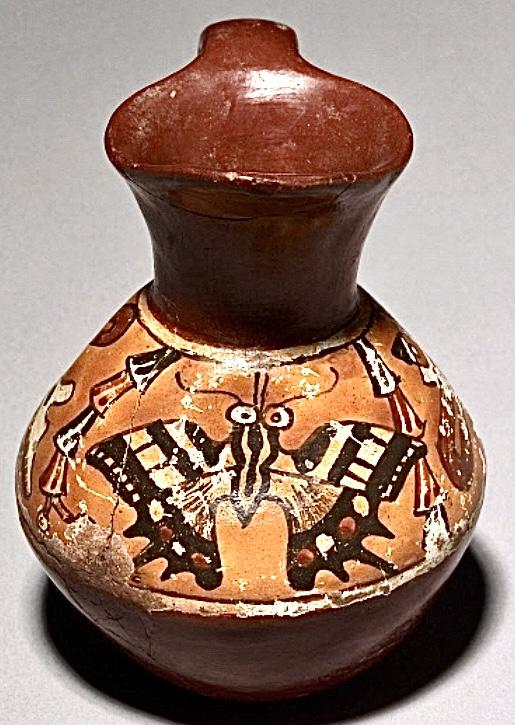

An Aztec stamp shows a butterfly with stretched wings. The motif was printed on fabrics and ceramics that embellished life but it also referred to ideas of ephemerality. Stamps adorned surfaces all of which were diaphanous (cloth) or breakable (ceramics). Sometimes Aztec decorated their skin with these stamps, thus equating the human form with the fragility of fabric and clay.

The symbiosis between flowers and butterflies
Flowers are pollinated by butterflies. It is a paleontological and botanical truth: without flowers, no butterflies; without butterflies, no flowers. Aztec poems describe Xochipilli’s palace as a place «where flowers grow tall». Another text mentions flowers, butterflies and moss that grows in water. It is very similar to Tlalocan, the vegetal paradise of god Tlaloc.
This combination of flowers, vegetation, water and butterflies confirms that Xochipilli was a fertility god, a quality he shared with his female counterpart, Xochiquetzal (xochi meaning flowers and quetzal referring to the feathers of the royal bird). She was either his twin sister or his wife. In the Aztec codices or manuscripts, she often appears with the yacapapalotl or butterfly nose-ring.
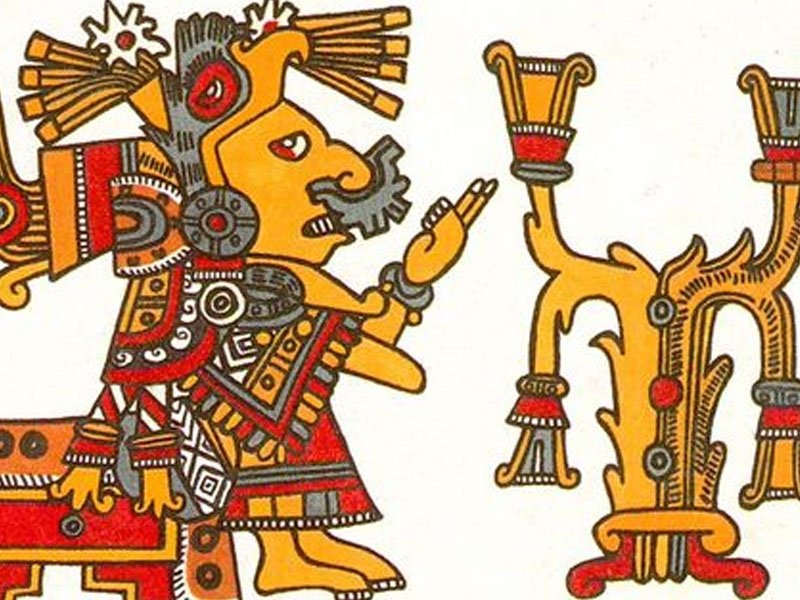
Xochipilli and Xochiquetzal are both deities of pleasure and fertility. They are like the two sides of a coin. They represent eroticism and procreation in its masculine and feminine aspects.
The fate of the butterfly warriors
The changes a butterfly undergoes in the course of its short lifespan (from egg to larva, from larva to chrysalis, from chrysalis to winged insect) have struck a chord in many cultures that view the butterfly as a symbol of change, death and rebirth. In some civilizations, the butterfly represents the Soul captive of the body. Roman writer Apuleius tells us the story of Psyche and Cupid. Cupid, the winged god of love was captivated by a beautiful mortal named Psyche. But his mother, goddess Venus, was against their marriage and Psyche had to overcome many trials and hardships before being reunited with her loved one. She was then granted immortality and grew a pair of butterfly wings. In Greek, psyche means the soul and the tale could be interpreted as an initiatic journey to free the soul from its mortal envelope.
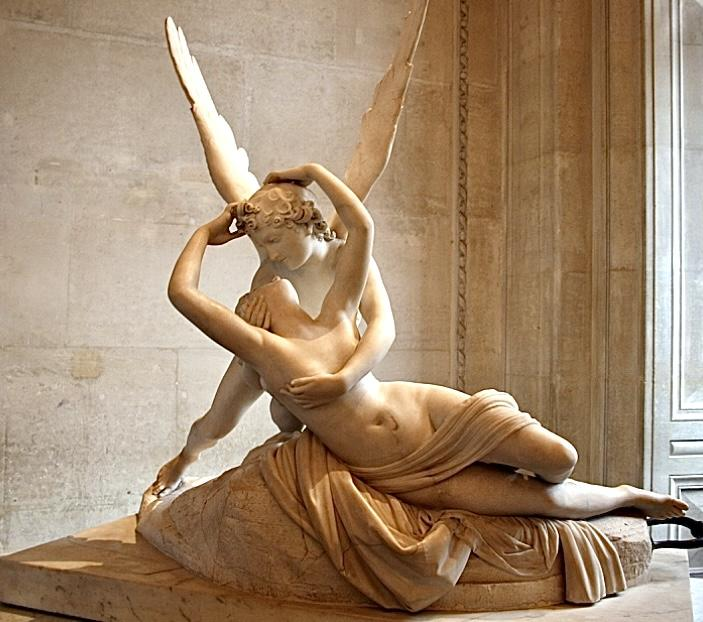
In Aztec myths, the souls of the deceased warriors were believed to leave Earth and travel to the Sun. When they came down, they were reincarnated into butterflies and hummingbirds. Warriors in statues have breastplates or pectorals shaped like butterflies. A picture of an Aztec warrior shows him with a sort of butterfly backpack.
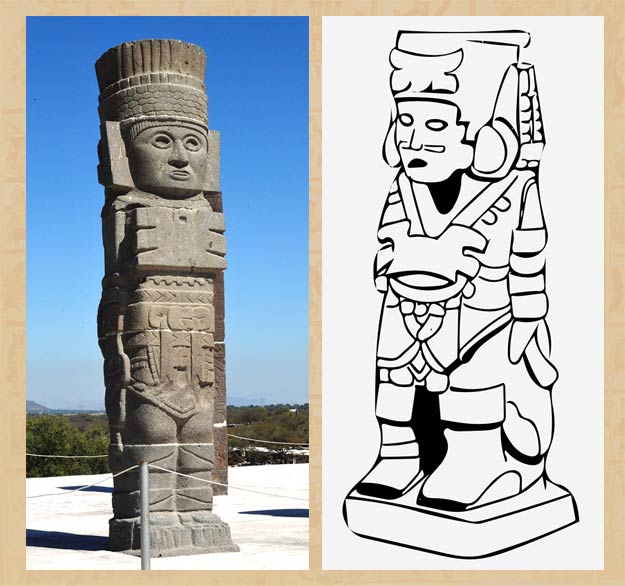
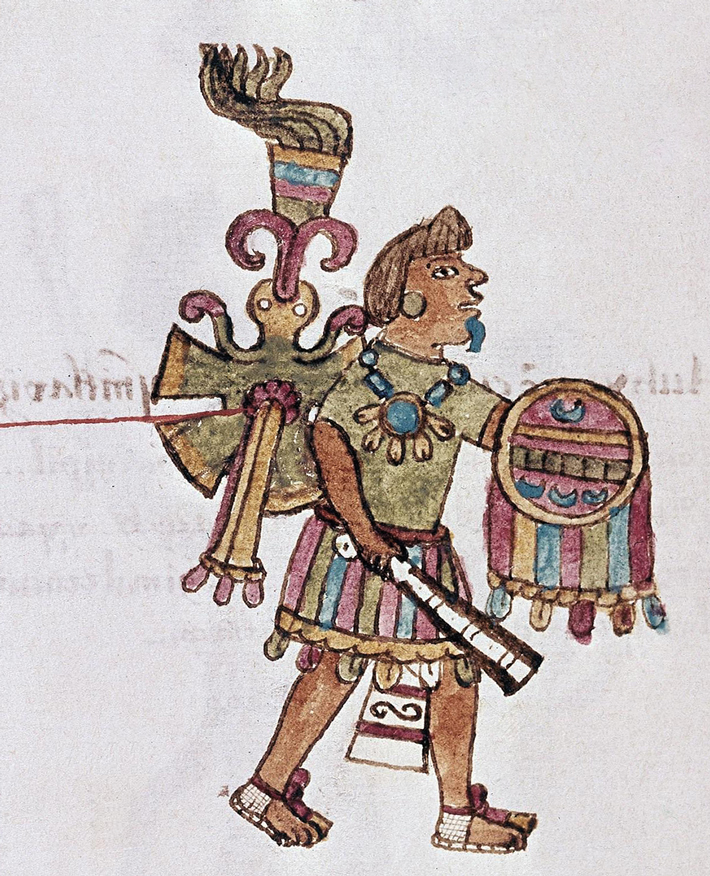
Xochipilli was in charge of escorting the souls of the warriors to the Sun. There seems to be a deep connection between flowers, fire, sun, butterflies and the idea of death and rebirth. Flowers among many other meanings symbolized the sun for the Aztecs. Butterflies were assimilated to fire and flames because of their shimmering beauty. This explains why in manuscripts, the god of fire, xiuhtecuhtli, has a butterfly shaped blason and Chantico, the goddess reigning over fires in the family hearth has a yacapapalotl or butterfly nose-ring.
Itzpapalotl presents a darker, more sinister version of these myths. She was the goddess of war and death and ruled over the paradise world of Tamoanchan, the paradise of deceased infants and the place where the gods created the first human race out of sacrificial blood and crushed bones. Her name means the Obsidian Butterfly. She is represented as a skeletal being with butterfly wings (more like bat wings) fringed with obsidian knives. Obsidian is a very hard stone used to make sacrificial blades. Like the silex, it is also a flint stone : it can produce sparks and fire. So once more, we find a symbolic link uniting butterflies, war, fire, death and rebirth.
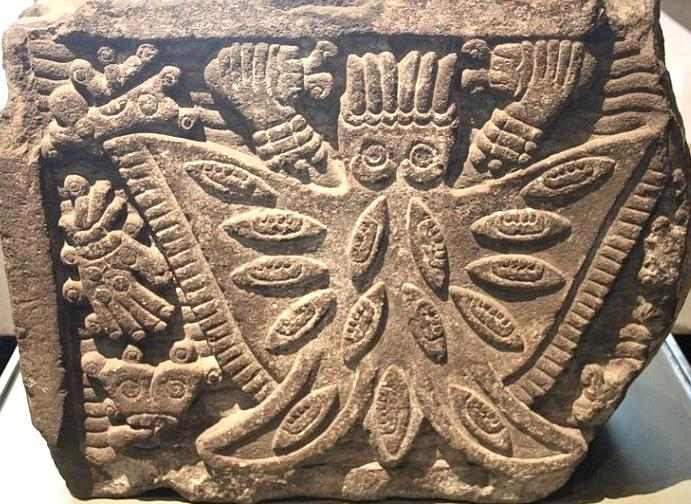
The different symbolic meanings of the butterfly show that Xochipilli is not only the god of pleasure but a fertility god and a solar god. He is associated with Xochiquetzal but also the sinister Itzpapalotl.
The flutter of the butterfly is the dance of Love and Death, Eros and Thanatos, the two forces that drive human life.
Sources:
https://archive.org (Articles Papillon, Obsidienne)
Image Source: wikimedia.org, books.openedition.org, bmimages.com, collectionapi.metmuseum.org, cdn1.latinoheritageintern.org, mexicolore.co.uk, archaeology.org, mythologica.fr, i0.wp.com
